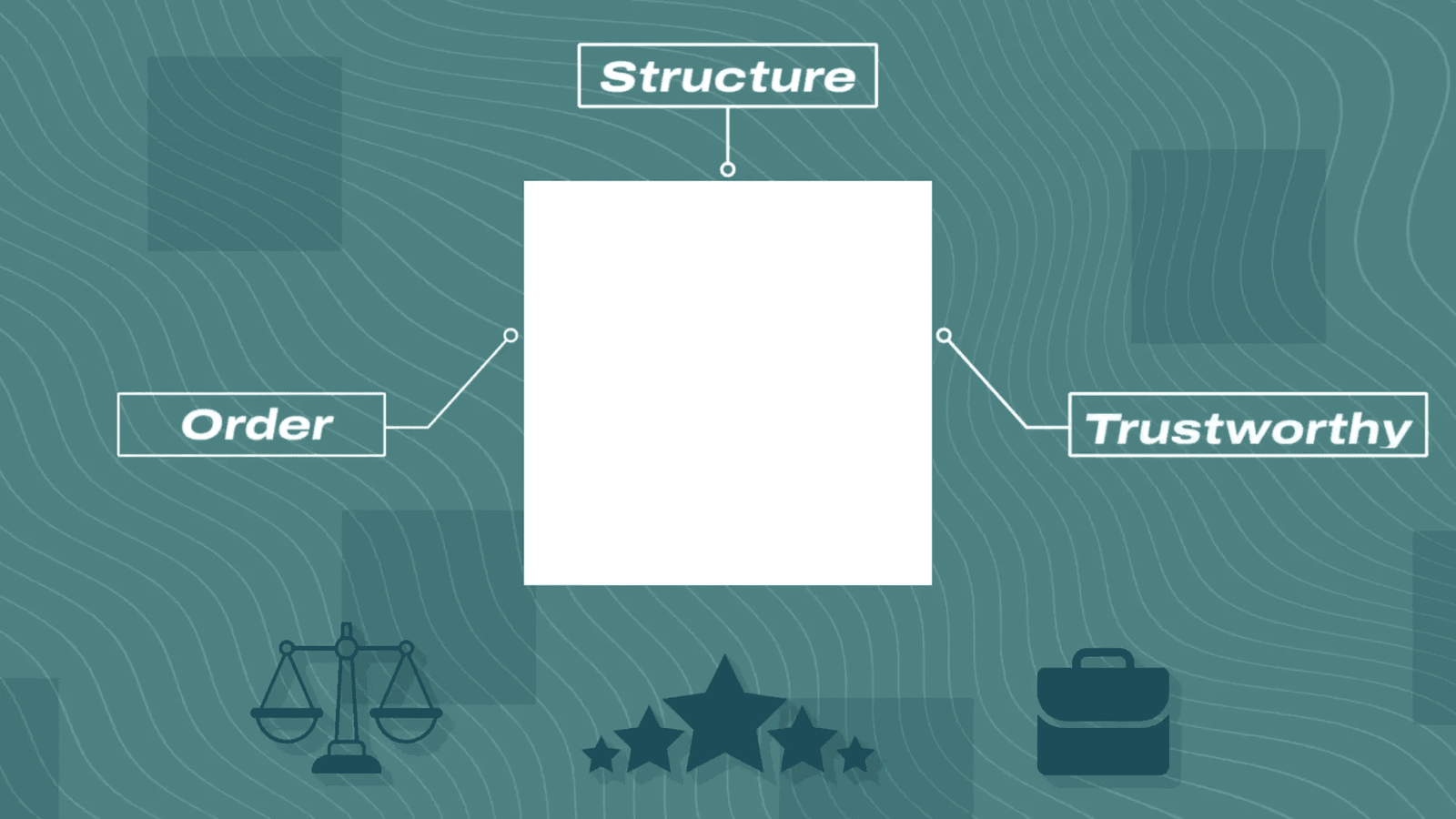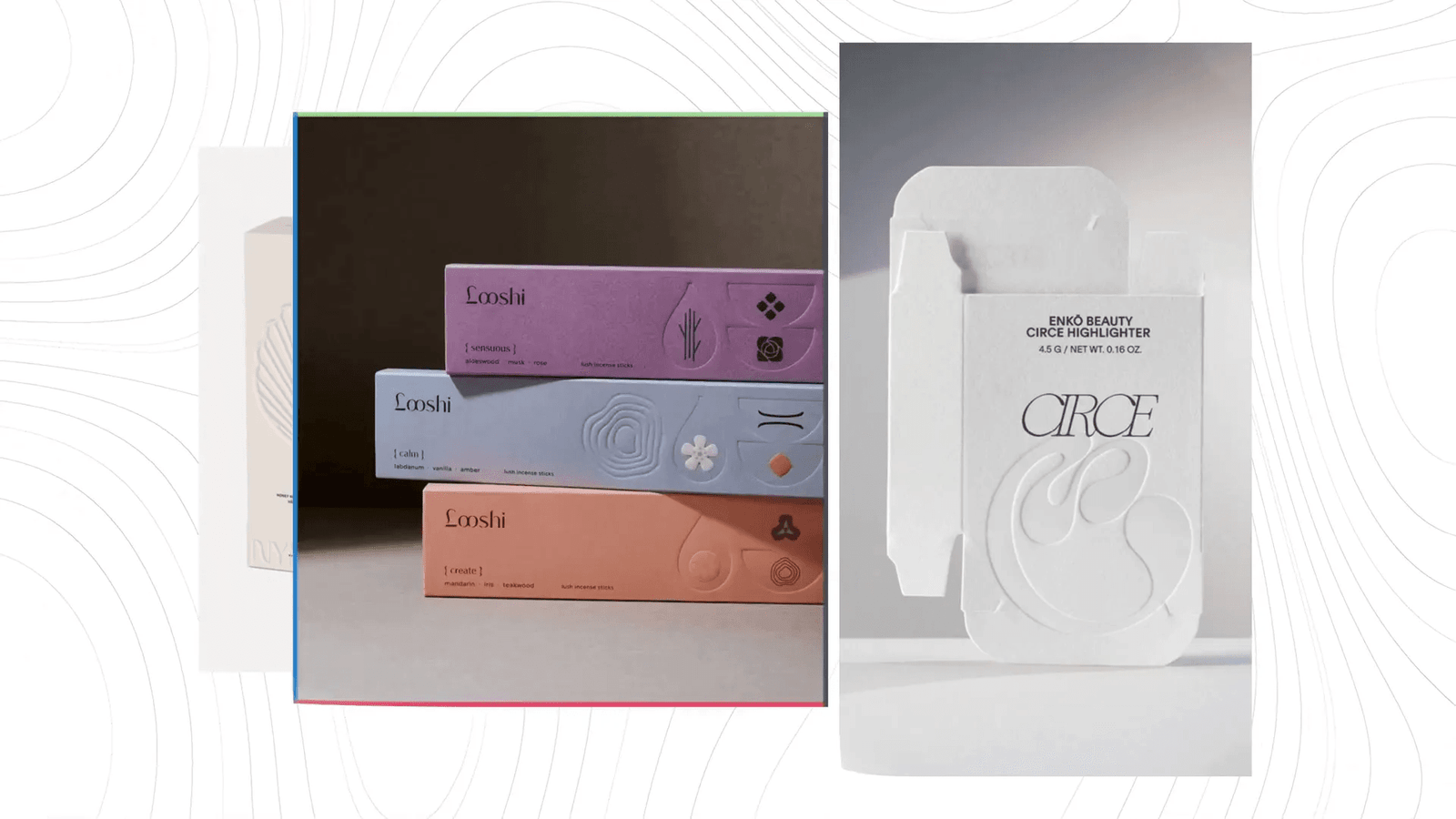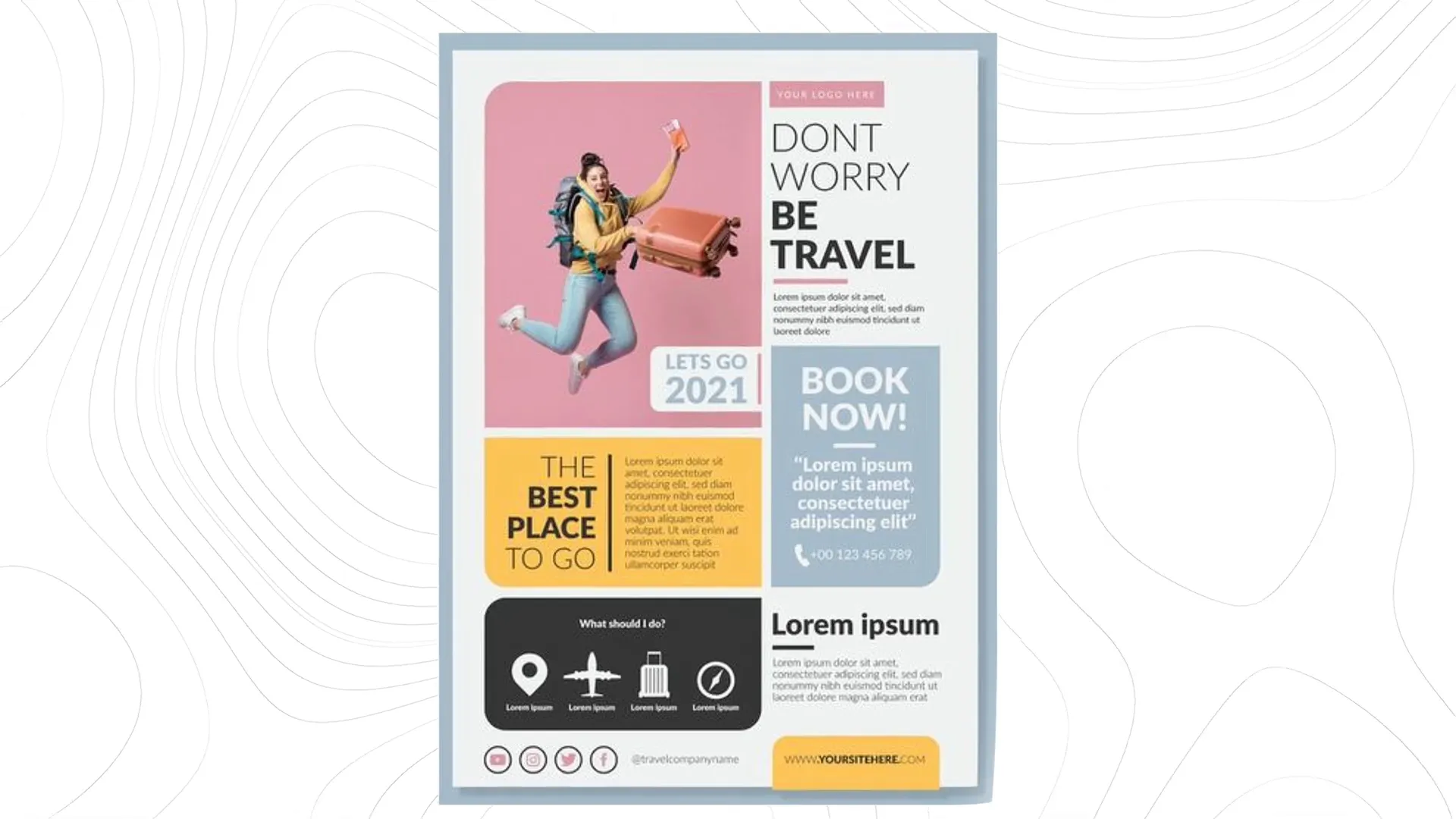Information source: Satori Graphics
Understanding shape psychology in design can profoundly influence how clients perceive your work, especially when considering user interaction and shapes. This comprehensive guide will walk you through the essential steps to master the psychological impact of shapes, enabling you to craft designs that evoke the desired emotions. However, it is important to recognize that this process can be complex and may require patience. Although some shapes might seem simple, they carry significant meaning because they can affect perceptions in subtle ways. This knowledge is crucial if you aim to engage your audience effectively.
Step 1: User Interaction and Shapes – Master Shape Psychology 🎨
To truly harness the power of shape psychology in design, one must first master fundamental concepts behind how shapes influence perception. This involves understanding emotional responses that various shapes evoke and how they can be strategically applied to enhance design effectiveness. However, it is crucial to recognize that shapes can elicit different reactions because of cultural context. Although shapes may seem simple, their impact is profound.
Begin by familiarizing yourself with the psychological associations of geometric shapes, organic forms and symbolic representations. Each shape carries its own set of meanings and implications: this can drastically alter how viewers perceive a design. For example, circles often symbolize unity and harmony; however, squares convey stability and reliability. Although the interpretations may vary, 1 must consider the context because it influences perception significantly.
By mastering these associations, you can make informed decisions that align your design choices with the desired emotional impact. This foundational understanding is crucial for any designer looking to create compelling; psychologically resonant work. However, although it may seem straightforward, the nuances of emotional response can be complex. Because of this, a deeper exploration is often necessary.
Key Concepts to Grasp
- Emotional Associations: Different shapes evoke different feelings.
- Strategic Application: Use shapes to guide viewer perception.
- Foundational Knowledge: Understand the basics before diving deeper.
Step 2: Understand Every Shape 🟠
Understanding the nuances of every shape is essential in mastering shape psychology in design. Each geometric shape has unique attributes and psychological effects that can be leveraged to communicate specific messages; however, this complexity can be challenging. Although shapes can evoke particular emotions, designers must consider their context. Because of this, effective communication through shapes requires careful thought and consideration.
Circles are often seen as friendly and inclusive, while squares convey a sense of order, professionalism and structure. Familiarizing yourself with these traits will empower you to select the appropriate shapes for your projects; however, this can be challenging. Although many prefer circles, squares may be more suitable in certain contexts because of their stability.
Moreover, triangles which can signify movement and action depend on their orientation. Upward triangles suggest growth; however, downward triangles convey stability. This understanding allows you to manipulate shapes to create desired dynamics within your designs, although it can be challenging at times. Because of this, a careful consideration of triangle orientation becomes essential for effective design.
Shapes and Their Psychological Impacts
- Circles: Unity, wholeness, and comfort.
- Squares: Stability, reliability, and professionalism.
- Triangles: Action, energy, and movement.
- Rectangles: Security, organization, and dependability.
- Hexagons: Connection and efficiency.
Step 3: Explore Geometric Shapes 🔷
Geometric shapes which form the backbone of many designs: understanding their specific characteristics is vital for effective communication through visual means. Each geometric shape can evoke a range of emotions and associations that can guide the viewer’s experience; however, this complexity is not always immediately apparent. Although these shapes may seem simple, they often carry deeper meanings because of cultural contexts.
Circles often used in logos convey a sense of community and inclusivity; their symmetrical, smooth nature makes them comforting and protective. However, squares and rectangles provide a sense of order and reliability, making them ideal for corporate designs because they project stability. Although both shapes serve distinct purposes, this contrast enhances visual communication.
Triangles with their dynamic nature can direct focus and suggest movement: their orientation can alter their meaning, making them versatile tools in design. By exploring how these shapes function, you can create designs that resonate with your audience on a deeper level. However, this requires careful consideration; although triangles are simple forms, they possess an inherent complexity because of their potential interpretations.
Geometric Shapes to Consider
- Circles for warmth and unity.
- Squares for trust and stability.
- Triangles for action and direction.
- Rectangles for organization and clarity.
- Hexagons for collaboration and efficiency.
Step 4: Discover Organic Shapes 🌿
Organic shapes are essential for adding human touch to designs. Unlike geometric shapes, organic forms are often irregular and fluid; they evoke a sense of nature and spontaneity. These shapes can create calming effect, making your designs feel more approachable. However, some may argue that their unpredictability can complicate the design process. Although this may be true, many designers embrace these curves and lines because they add warmth and character.
Brands that emphasize wellness or natural products often incorporate organic shapes to reflect their values, directly impacting user interaction and shapes. For example, wavy lines and soft curves can suggest comfort; however, they also evoke tranquility, making them perfect for skincare or health-related products. Although these designs may appeal to consumers, they resonate because they align with the ideals of holistic living. This approach is effective, but it requires a careful balance of aesthetics and functionality.
Utilizing organic shapes allows you to break away from rigid structures; adding a layer of warmth and connection. This approach can enhance the emotional impact of your designs, making them more relatable to your audience. However, it is important to consider the balance between organic and structured elements, because this can significantly influence the overall perception. Although some may prefer traditional forms, embracing fluidity can yield unexpected outcomes.
Benefits of Organic Shapes
- Calming Effect: Evokes feelings of comfort and relaxation.
- Natural Appeal: Connects with themes of nature and human experience.
- Versatility: Can be used in a variety of design contexts.
Step 5: Utilize Symbolic Shapes ❤️
Symbolic shapes are powerful tools in graphic design, because of their immediate recognition and cultural significance. These shapes carry meanings that can convey messages without the need for additional context. For example, hearts symbolize love, however, stars often represent excellence. Although their interpretations may vary, this adds depth to their usage; many designers rely on these symbols to communicate complex ideas effectively.
Incorporating symbolic shapes into your designs can enhance clarity and impact: for instance, Airbnb’s logo cleverly uses heart shape to convey belonging and community this aligns perfectly with their brand mission. However, some might argue it is too simplistic, but it effectively communicates the essence of the brand. Although there are various shapes to consider, the heart remains a powerful symbol because it resonates with many people.
Understanding the cultural and sociological associations tied to various shapes allows you to communicate effectively with your audience. By leveraging symbolic shapes, you can create designs that resonate deeply and convey powerful messages instantly. However, this ability to use shapes effectively is crucial, because it enhances your work’s impact. Although some may overlook these elements, they play a significant role in design.
Effective Use of Symbolic Shapes
- Immediate Recognition: Shapes like hearts and stars have clear meanings.
- Cultural Significance: Shapes often carry different meanings across cultures.
- Enhanced Clarity: Use symbols to communicate complex ideas simply.
Step 6: Incorporate Lines and Line-Based Shapes 📏
Lines are fundamental elements in design. They serve various purposes that can greatly influence viewer perception; they can guide the eye, create rhythm and suggest movement. Understanding how to use lines effectively, however, can enhance the overall impact of your designs this is crucial, because it shapes the experience of the audience. Although lines may seem simple, their role is profound.
Vertical lines often convey energy and dominance; however, horizontal lines suggest stability and calmness. For example, IBM’s logo utilizes horizontal lines to create a sense of order and modernity. Although they serve different purposes, both types of lines play an important role in design because they evoke distinct emotional responses.
Incorporating lines can also assist in creating boundaries or sections within your design—making information easier to digest. By understanding the psychological implications of lines, you can direct focus and enhance the narrative of your visual communication. However, this approach requires a deeper awareness of visual elements, because it influences how the audience perceives the overall message. Although lines serve practical purposes, they also evoke emotional responses.
Types of Lines and Their Effects
- Straight Lines: Convey order and structure.
- Curved Lines: Suggest movement and softness.
- Diagonal Lines: Imply action and dynamism.
- Wavy Lines: Evoke a sense of fluidity and comfort.
Step 7: Implement Pro Tips for Shape Usage 💡
Effectively utilizing shapes in design necessitates a strategic and often complex approach. Here are a few pro tips to enhance your designs, especially when considering shape psychology: however, it’s essential to remember that shapes can evoke emotions because they communicate meaning beyond mere aesthetics. Although some shapes may seem simple, their impact is profound; this is why understanding their psychological implications is crucial.
- Triangles for Movement: Position upward triangles to suggest growth and ambition, while downward triangles can ground your design.
- Grid-Based Layouts: Use squares and rectangles to create organized content that conveys reliability.
- Rounded Corners: Soften the edges of squares and rectangles to make designs feel more approachable.
- Color Coordination: Combine shapes with colors that evoke the same emotions for a cohesive message.
These tips can assist you in crafting designs that not only appear visually appealing however also resonate on a psychological level with your audience. Although some might overlook this aspect, it is essential because effective design engages viewers.
Step 8: Combine Shapes with Colors 🎨
The interplay between shapes and colors can significantly enhance your design’s emotional impact. Each color evokes specific feelings; and when paired with the right shapes, they can create a powerful visual statement. However, this relationship is complex, because not all combinations yield the same effect. Although one might think that any color works with any shape, the reality is quite different.
If you utilize calming organic shapes such as circles, you might want to consider incorporating soft blues or greens to enhance tranquility. This combination can generate an inviting atmosphere, ideal for wellness brands; however, it’s essential to remember that the right color choices can significantly impact the overall feel of a space. Although some may prefer bold colors, soft hues often evoke a sense of peace and relaxation.
On the other hand vibrant colors with angular shapes can convey energy and excitement; making them suitable for sports or entertainment designs. By thoughtfully combining shapes and colors, you can effectively communicate your brand’s message and values. However, this process requires a deep understanding of visual principles, because it influences audience perception. Although it may seem simple, the nuances involved are significant, but they often go unnoticed.
Color and Shape Combinations to Consider
- Soft Colors + Organic Shapes: Evokes calmness and comfort.
- Bright Colors + Angular Shapes: Conveys energy and action.
- Neutral Colors + Geometric Shapes: Suggests professionalism and reliability.
Read this post to achieve color harmony for effective design.
Step 9: Understand the Evidence Behind Shape Psychology 📊
Shape psychology is not merely theoretical; it is supported by various research that demonstrates how shapes influence human perception and emotions. Studies have shown that our brains are wired to respond to shapes in specific ways, however, this understanding can also be applied to design. Although the findings are compelling, some may argue that the effects of shapes are subjective. But, because of the evidence, it is hard to dismiss their significance in our daily lives.
fMRI scans reveal that angular shapes can provoke stronger emotional responses due to their association with action and intensity. However, smooth, rounded shapes are linked to feelings of calmness and safety; this distinction is crucial. Although both types of shapes elicit reactions, their impacts vary significantly. Because of this, understanding the nuances is essential.
These findings underscore importance of using shapes intentionally in design. As designers, understanding these psychological principles is crucial because it allows us to create more effective and emotionally resonant visuals. However, one must consider the impact of each shape chosen, although it may seem trivial at first. This careful consideration can enhance the overall design, but it requires thoughtful engagement.
Key Research Findings
- Emotional Associations: Circular logos evoke warmth and community.
- Angular Shapes: Associated with strength and professionalism.
- Simple Shapes: Isolate emotional impacts effectively in design.
Step 10: Create Targeted Visuals Using Shapes 🎯
Designing with intention is key to creating visuals that resonate with your target audience; however, understanding the psychological impact of different shapes is essential. You can therefore tailor your designs to evoke specific emotions and responses, because this approach enhances the overall effectiveness. Although some may overlook these elements, they play a significant role in engaging viewers.
If your aim is to promote a community-focused brand, using circular shapes paired with warm colors can enhance feelings of inclusivity. However, for a tech brand that emphasizes reliability, incorporating squares and cool colors can reinforce a sense of professionalism. Although both strategies are effective, the choice of shapes and colors should align with the brand’s core message and target audience. This approach not only influences perception, but also fosters deeper connections with consumers.
Aligning your shape choices with your brand’s message creates targeted visuals that speak directly to your audience’s emotions and perceptions, impacting user interaction and shapes. This strategic approach not only enhances your design but also strengthens your brand identity.
Ready to master graphic design skills?
Explore Nick Saporito’s exceptional and transformative DESIGN courses to unlock your creative potential. His comprehensive curriculum (which includes various tools) offers the insights needed for success in design. Don’t miss the chance to learn from a trusted expert; however, this opportunity may not last long. Transform your design journey because you deserve the best education. Visit “Logos By Nick” today to start mastering graphic design!
ALL COURSES ACCESS
Strategies for Targeted Visuals
- Define Your Brand’s Message: Understand what emotions you want to evoke.
- Select Appropriate Shapes: Choose shapes that align with your brand’s identity.
- Combine with Color Psychology: Use colors that enhance the emotional impact of your shapes.
CreateStudio | ClipMagic | PhotoVibrance | MediaPlace | Twinkle











